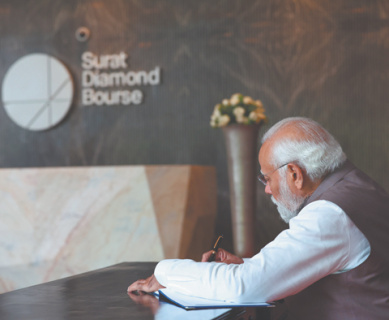
The United States has dealt a severe blow to its relationship with India, imposing a punitive 50% tariff on all Indian imports in response to New Delhi’s continued purchases of Russian oil. The move by the Trump administration has sent shockwaves through the Indian economy, targeting its largest trading partner and threatening to unravel years of strategic cooperation. For India, the decision is being condemned as a treacherous act that calls into question the country’s close defense ties with Washington.
The economic fallout is expected to be immediate and severe, particularly for India’s labor-intensive industries. The world-renowned diamond cutting and polishing hub in Surat has reportedly ground to a halt, as the United States is the primary market for its finished gems. Other sectors, such as leather goods and handicrafts, are also facing immense pressure, threatening the livelihoods of millions. The tariff, one of the highest in the world, dramatically undercuts India’s competitiveness against its Asian rivals.
President Trump has explicitly linked the trade measures to the war in Ukraine, framing the tariff as a direct consequence of India’s economic support for Moscow. In public statements and on social media, the White House has argued that by becoming one of the largest buyers of Russian energy alongside China, India is undermining international efforts to isolate Russia. This justification turned months of routine trade negotiations over a $44 billion trade deficit into a full-blown geopolitical confrontation.
The 50% rate was implemented in stages, escalating from a previous 25% tariff. An executive order signed earlier this month added an additional 25% specifically targeting India for its Russian oil dealings, a move The New York Times described as a ‘bombshell’ dropped on the already fragile bilateral trade talks. The demand to halt Russian energy imports was an ultimatum that New Delhi deemed outrageous.
India’s energy relationship with Russia has deepened significantly since the start of the Ukraine crisis. Russian crude, which accounted for a mere 0.2% of India’s oil imports before February 2022, soared to represent roughly 45% of its imports by mid-2023, with daily purchases exceeding 2 million barrels. This arrangement proved mutually beneficial: Russia secured a vital market after being shut out of Europe, while Indian refiners like Reliance Group reaped massive profits by purchasing discounted crude for domestic use and for re-export as refined products like diesel.
The White House’s aggressive trade policy now jeopardizes a cornerstone of American foreign policy in Asia. For the past three decades, Washington has meticulously cultivated India as a strategic bulwark against China’s rising influence. This alignment, championed by both President Trump and Prime Minister Narendra Modi who once publicly hailed their friendship, is now at risk of completely collapsing.
Signs of a dramatic diplomatic realignment are already emerging from New Delhi. According to reports, Prime Minister Modi has ignored multiple phone calls from President Trump following the tariff announcement. In what is being interpreted as a significant diplomatic signal, Modi is now scheduled to attend the upcoming Shanghai Cooperation Organisation (SCO) summit in China, suggesting that India may be pivoting towards resolving its long-standing border disputes with Beijing as its partnership with Washington falters.
